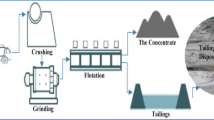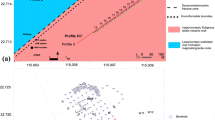Abstract
Data from a direct current resistivity survey and geologic logs from boreholes were used to map the top of permafrost at a remote air force installation in Alaska. This study resulted from a remedial investigation that was conducted at Eielson Air Force Base near Fairbanks, Alaska, under the federal Comprehensive Environmental Response, Compensation, and Liability Act (CERCLA) regulations. The depth and continuity of the permafrost was important in determining the fate of petroleum contamination that was inadvertently discharged to the ground during earlier air force operations. The results indicate that the top of permafrost forms a highly irregular surface. In general, however, the top of permafrost forms a diagonal ridge at the center of the contour grid that is bordered on each side by troughs.
Similar content being viewed by others
Author information
Authors and Affiliations
Additional information
Received: 21 November 1995 · Accepted: 5 March 1996
Rights and permissions
About this article
Cite this article
Gilmore, T., Clayton, E. Mapping the top of the permafrost using surface direct current resistivity survey. Environmental Geology 30, 29–33 (1997). https://doi.org/10.1007/s002540050129
Issue Date:
DOI: https://doi.org/10.1007/s002540050129




